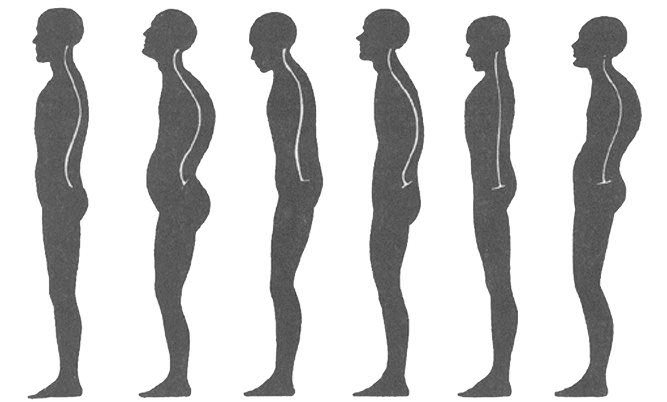
Postural Restoration™️
Posture is a common issue that people seek help from their physiotherapist, massage therapist or chiropractor for, and some of the most common complaints are things like:
- My right shoulder muscles are always tight
- There's this spot on my left shoulder blade
- It hurts to turn my head
- Stretching my neck is tight/clicky
- I get a click/crunch when I move my shoulder blades
- My lower back hurts
- I'm always cracking my neck
- I get a headache at the end of the day
- I feel tight in the base of my skull
- Sitting makes my back hurt
- I feel like I'm off balance
- I'm tired all the time
- My back, shoulders and neck won't let go
- and the list goes on...
Why is it that people have such a common list of complaints about how their posture causes pain? For the very simple reason that holding ourselves upright against the constant force of gravity is hard. Gravity is a constant force pulling down on us, and when we don't feel 100% safe in the way they we resist it, our body lets us know by making it painful.
Now, some therapists hold a belief that there is no actual proven link between posture and pain and citing studies they think show no connection (we'll come back to this study later). Yet anyone who's had to sit in a chair for an extended period of time will tell you their personal experience of the link between posture and discomfort.
See, the dirty little secret is this: There isn't just one posture. There's two. As bipedal animals, humans have two basic ways to organise ourselves against gravity: over our left leg and over our right leg. There's always two. Every second that we're standing up we're either subtly bouncing our weight from right to left foot, or not-so-subtly shifting our weight as we put one step in front of the other. So we have a left-oriented set of postural muscles and a right-oriented set - a left-posture and a right-posture, and these muscles work in alternating shifts to give each other a break from the demanding job of resisting gravity. Or, at least they should.
Here's where the problem tends to lie. Humans aren't symmetrical. Different organs are sitting in different places in the abdomen. The liver is on the right, stomach on the left, the intestines are spiralled. Inside the ribcage it's not symmetrical either: the heart mostly sits on the left side, while we have two lobes of the lung on the left and three on the right. All of that (plus a bunch more we might talk about another day) mean that regardless of right- or left-handedness humans have a strong preference for using the right leg for support. This means using the right-side postural muscles all the time. Which also means the left-side postural muscles have forgotten how to do their job.
So, let's talk about this study again. The one that finds 'no link' between pain and posture. Actually it finds no link between lumbar lordotic angle (the 'curviness' of the lower back) between people complaining of lower back pain and people without lower back pain. What it does find is several strong links implying people with lower back pain have less motion bending to the right than a group without pain. That sounds like this group is stuck in their right-sided posture and can't get out of it. And they have less range because they're already halfway to the edge when they're just standing still.
Okay, so what does this mean really for all of us that are spending our days sitting or standing in discomfort and wanting to do something about it? It means that restoring your posture - fixing your posture - means re-awakening your other side. If you reclaim your body's ability to shift into the left side, you can finally give those right-sided postural muscles the break they've been crying out for and start them working shifts on holding you upright.
Here's a couple of tips your can try on your own to find your left posture muscles:
- when you're sitting, try shifting your left knee behind your right knee
- try leaning on your left elbow when sitting
- reach your left hand behind the computer screen
- if standing at a desk, think about bringing weight into your left heel and right arch
- reach forwards with your left arm while you inhale
- reach forwards with your right arm while you exhale
- try to stand on your left leg, with the left side of the hips behind the right
Of course, there's always more complicated possibilities that might be locking us into a right-sided posture and every person is unique in the situations that their body comes up with to stand, sit, work, run, jump and live while being stuck in right-sided posture. Sometimes a more in-depth assessment is necessary to help with fixing a stuck posture and for that I recommend finding a practitioner that practices a Postural Restoration™️ approach to restoring balance between your sides.
If you live in the Vancouver, Canada area you can always too
